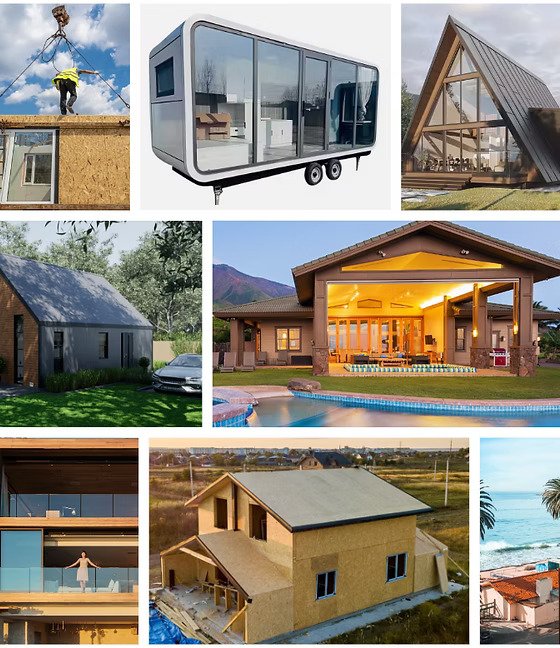Can You Convert Your Conventional Home into a Modular Home?

The idea of converting a traditional or conventional residence into a modular home is becoming increasingly popular as homeowners seek sustainable, efficient, and customizable living solutions. Modular homes, known for their factory-built components and quick assembly, offer a modern approach to housing that can often integrate seamlessly with existing structures. But is it feasible to convert a conventional home into a modular one? Let’s explore the possibilities.
Understanding Modular Homes
Modular homes are built in sections or modules in a factory and then transported to the site for assembly. These homes are highly customizable, eco-friendly, and constructed with precision. Unlike mobile homes, modular homes are permanent structures that adhere to the same building codes as traditional homes.
Can a Traditional Home Be Converted into a Modular Home?
While a full conversion of a traditional home into a modular home may not always be feasible, there are ways to integrate modular elements into an existing residence. Here’s how:
- Partial Modular Upgrades
- Additions: You can expand your traditional home by adding modular extensions, such as an extra room, a new wing, or even a second story. These modules are designed to blend with the existing structure seamlessly.
- Renovations: Certain parts of your home, like the kitchen or bathroom, can be replaced or upgraded with modular components. These upgrades are faster and less disruptive than traditional renovations.
- Replacing Entire Sections
- In some cases, outdated or damaged sections of a conventional home can be removed and replaced with modular components. This approach works well for homes that require significant structural repairs.
- Custom Modular Designs
- If you want to retain the essence of your traditional home while modernizing it, custom modular designs can replicate the style and aesthetics of your existing structure.
Advantages of Modular Customization
- Cost-Effectiveness
- Modular construction is typically more affordable than traditional renovations due to reduced labor costs and material waste.
- Faster Construction
- Modular components are built off-site in a factory, which speeds up the renovation or addition process compared to on-site construction.
- Eco-Friendly Solutions
- Using modular components reduces material waste and energy consumption. You can also incorporate sustainable materials and energy-efficient designs into your home.
- Design Flexibility
- Modular elements can be customized to match the style and layout of your existing home, offering a seamless blend of old and new.
- Minimal Disruption
- Since most of the construction happens off-site, the disruption to your daily life is significantly reduced.
Challenges to Consider
- Structural Compatibility
- Not all traditional homes are compatible with modular components. Structural assessments may be needed to determine feasibility.
- Permits and Codes
- Local building codes and zoning laws may impact the integration of modular components. It’s essential to work with professionals who understand these requirements.
- Cost vs. Benefit
- While modular upgrades are cost-effective, a full conversion of a traditional home into a modular home might not always be financially viable.
- Aesthetic Matching
- Ensuring that modular additions match the design and materials of your existing home may require careful planning and customization.
Steps to Begin the Conversion Process
- Consult a Modular Home Expert
- Work with architects or builders experienced in modular construction to evaluate your home’s potential for conversion.
- Structural Assessment
- Have your home’s structure inspected to determine compatibility with modular components.
- Design Planning
- Collaborate on a design plan that integrates modular elements while preserving the character of your traditional home.
- Obtain Necessary Permits
- Ensure all modifications comply with local building codes and regulations.
- Execute the Project
- Coordinate with the modular construction team for efficient installation and assembly.
While it may not be possible to completely convert a traditional home into a modular one, incorporating modular elements can offer a modern, efficient, and eco-friendly way to upgrade your living space. By integrating modular additions or renovations, you can enjoy the benefits of modular construction without sacrificing the charm of your existing home. With proper planning and expert guidance, the transformation can be both practical and rewarding.
